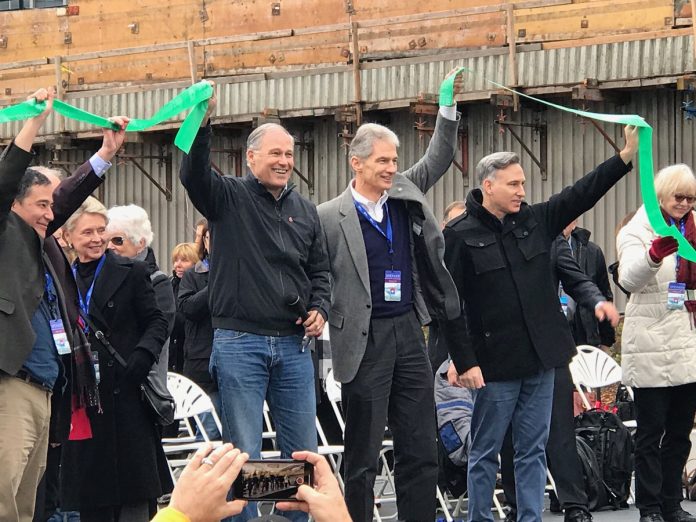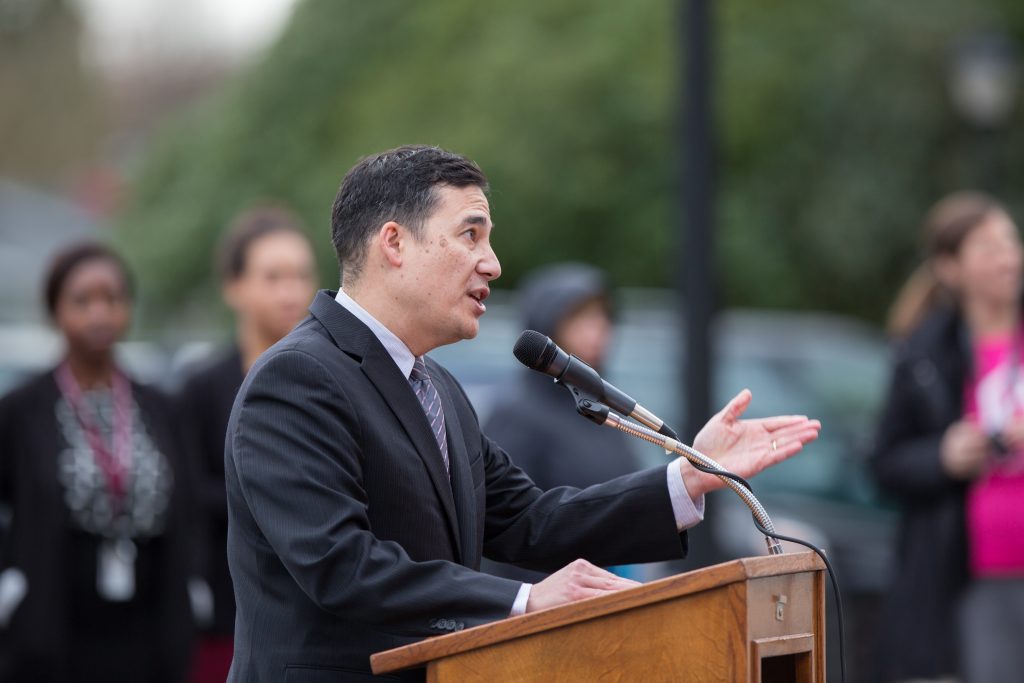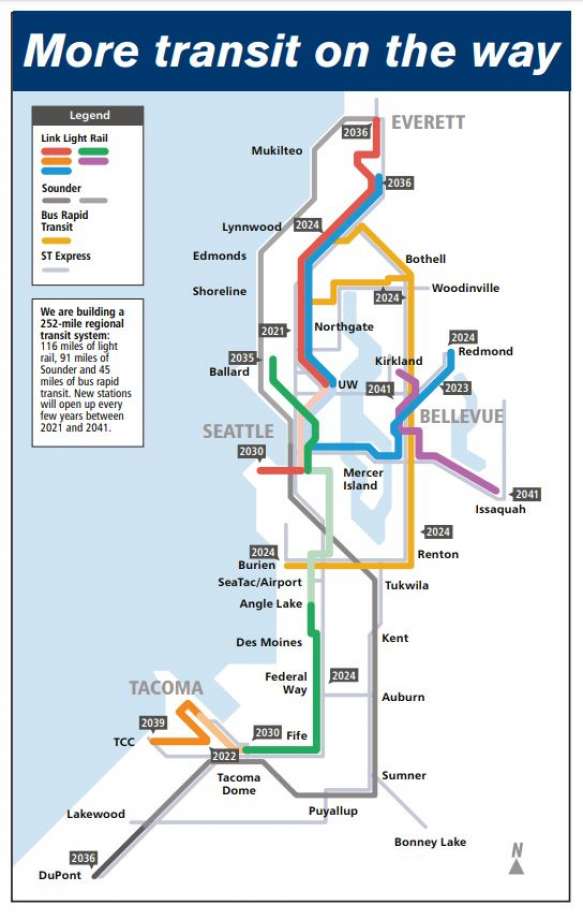
As we bid 2019 adieu and enter a new decade, it’s hard not to get wistful and ponder the past decade in the rearview mirror. There were some victories, but they are overwhelmed by our tremendous failure to address the coming climate catastrophe. We’re likely to look back as this epoch as the Tottering Teens, a decade of climate delay.
We crashed past the 400 parts per million (ppm) of atmospheric carbon threshold in 2013 and kept burning our path to climate destruction unabated. By 2019, carbon levels had spiked to 415 ppm, the highest level in human history. That’s 100 ppm higher than in 1958, when scientists began observing carbon levels at Mauna Loa Observatory in Hawaii. The trajectory we are on is a death spiral for much of humanity and countless other species, and yet our political leaders drag their feet.
Climate scientists keep telling us our carbon emissions are far too high, yet we keep fouling the atmosphere in greater and greater quantities each passing year. 3 ppm per year is an alarming rate. We’ve failed to get global emissions on a downward path, let alone on the sharp decline we need to avoid ecological meltdown. Even Seattle and Washington State, both self-styled climate leaders, have seen their emissions go up despite passing climate action plans promising to drive them down.
While Democrats have resigned themselves to lofty ambitions with little follow-through, Republican leaders refuse to even try. The year 2010 marked the ascendancy of the Tea Party movement in the Republican party, which seized control of the U.S. House of Representatives and blocked climate action at the federal level. The Republican party has fully embraced climate denial–advocating for wanton highway construction and subsidies for the coal, oil, and fracked gas industries while opposing clean fuel standards, high-speed rail, carbon taxes, and cap and trade.
Running out of time
The Intergovernmental Panel on Climate Change (IPCC) warned we must reach net zero carbon emissions by 2050 to keep average global temperatures from exceeding a rise by 1.5 degrees Celsius. An overwhelming consensus of scientists believe crossing that threshold would be incredibly dangerous and initiate catastrophic climate events, such as polar ice caps melting and submerging coastal cities, coral reef collapse decimating fisheries, deadly heat waves, and massive droughts spreading famine, particularly in the tropics.
How do we explain this failure? In a word: cars.
Transportation is our number one source of climate emissions in Washington, and the state has failed to tackle the problem. Nationwide transit ridership is shrinking–with Seattle barely bucking the trend–as Uber and Lyft proliferate and car ownership rates swell. Gas-guzzling SUVs have totally wiped out carbon savings from electric, hybrid, and fuel-efficient cars.
Due to their greater mass, high center of gravity, and blunt front-end, SUVs are also driving a pedestrian safety crisis that’s claiming more and more lives each year. This further compounds matters by discouraging people from walking, rolling, scooting, or biking–all much more climate-friendly ways to get around. We’re locked in a vicious cycle, and the incredibly seductive narrative of freedom and convenience we’re sold by car companies seeks to keep it that way: lulled into climate suicide like Icarus flying into the sun. It was fun to flap our wings while we could, I guess! Will our descendants who inherit the planet we trashed forgive our flightiness?
Who will lead us out of this climate quagmire?
Governor Jay Inslee–who ran a short-lived presidential campaign as the climate guy–has focused on electric cars rather than the fundamental transformation we need to our transportation system. In fact, Governor Inslee cut the ribbon on new SR-99 car tunnel under Seattle, never once uttering the word climate as he gushed about how great this “eighth wonder of the world” was. Meanwhile, State Senator Steve Hobbs (D-Lake Stevens), chair of the Senate Transportation Committee, is pushing a highway spending spree while crying poverty when it comes to transit.

Democrats have complete control of state government, but they have been ineffectual, declining to exercise their power. Democrats sat idly by and let Tim Eyman hijack policy direction with Initiative 976, which put transit and non-motorized transportation funding into turmoil statewide. With their legislative majorities, Democrats could have banned off-year initiatives to ensure Eyman could not take advantage of low-turnout elections to pass his regressive priorities. They could have outlawed ballot-shopping, which Eyman used to get the most preferential title on the ballot. Moreover, they could have passed progressive tax reform to lessen the tax fatigue that voters are feeling. Alas, Democrats didn’t do any of that and put themselves in a position to watch as I-976 passed with 53% of the vote.
Now, the Washington Supreme Court has already upheld an injunction and may well end up striking down I-976 since its misleading wording and multiple subjects appear to violate the state constitution. However, the damage has already been done in the form of delay, putting Democrats (especially those in suburban seats) on their back feet. Instead of going on the climate offensive, we’re playing defense and cleaning up Tim Eyman’s mess.
The decade did see two state ballot initiatives attempting to enact a carbon tax, but both failed. I-732, a carbon tax that lowered other taxes to stay revenue neutral, grabbed only 40.75% of the vote in 2016. I-1631 took the approach of investing carbon tax revenue in green infrastructure and managed 43.44% of the vote, still well short of the 50% threshold it needed to pass. A carbon tax would be an important step, but not a cure-all either, as Vox climate reporter David Roberts has warned.
A growing climate movement
While we didn’t do enough to get climate emissions on a downward trajectory in the Tottering Teens, that doesn’t mean there weren’t successes and promising developments.

Seattle voters repeatedly invested in transit service–backing the Move Seattle Levy and Seattle Transportation Benefit District–which allowed the region to lead the nation in growing transit ridership and cutting car ownership rates. In 2016, the Seattle metropolitan area passed the Sound Transit 3 ballot initiative, a major transit expansion package that will add 62 miles of light rail and 54 miles of bus rapid transit in King, Snohomish, and Pierce counties.
Moreover, the Green New Deal movement launched, pushing the conversation around climate action farther than it has ever gone in our country. Green New Deal framing has helped ensure that racially oppressed and economically downtrodden people see that action as inclusive of them–offering jobs, neighborhoods with cleaner air and water, and the agency to participate. It’s not just about saving the planet so that the comfortable can stay comfortable, but to correct past injustices and ensure a better life for all.
The Seattle Green New Deal has seen Got Green join hands with 350 Seattle to center communities of color in the climate justice movement. That broad coalition and grassroots energy has built strong support on city council, which passed a Seattle Green New Deal framework in 2019. We still need to flesh out the bones of that framework, but the progress has been remarkable.
Young people–recognizing they stand the most to lose–are embracing climate action like no generation ever has. They’re leading, too. High school students like Greta Thunberg are leading the call for action, and the youngest U.S. Representative, Alexandria Ocasio-Cortez, is also the most outspoken on climate change. The next decade could look a lot different than the past decade. We can learn from the lumps we’ve taken and fight back. Let’s boldly redesign our cities to turn away from our nightmare course.
Doug Trumm is publisher of The Urbanist. An Urbanist writer since 2015, he dreams of pedestrian streets, bus lanes, and a mass-timber building spree to end our housing crisis. He graduated from the Evans School of Public Policy and Governance at the University of Washington in 2019. He lives in Seattle's Fremont neighborhood and loves to explore the city by foot and by bike.

